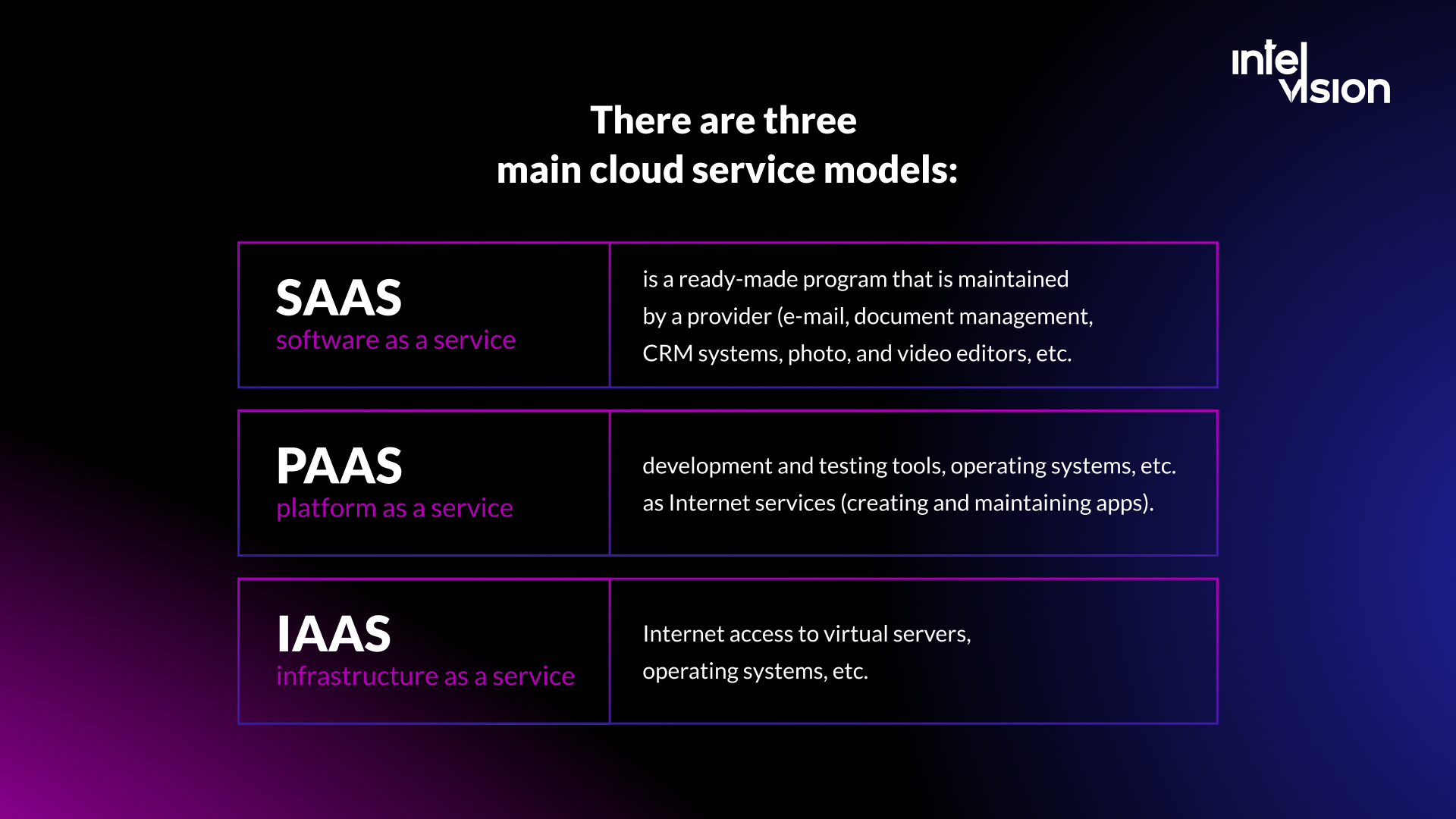
Cloud Migration in Energy Industry
Cloud technologies are present in most areas of human activity. Even people far from the IT world are familiar with several services using this architecture. However, the presence of cloud technologies in our lives doesn’t end with information repositories in Google. Business, industry, medicine—these and other vital areas also use cloud-based solutions.
Energy trends are shifting to renewables, advanced digitization, and customer engagement—and even customer involvement in energy generation. Yet, 82% of power and utility companies globally are not ready for market transformation.
To distinguish themselves from the emerging competition and to solidify themselves as industry leaders, energy providers must embrace innovative software solutions. We’ll highlight the crucial elements of modern cloud-based app development, the types of these technologies, and consider in detail their benefits.
What is the Energy Cloud
It is possible to provide extensive ubiquitous access to any configuration of computing resources with the help of cloud technologies. This refers to servers, networks, applications, storage, etc. All this can be easily and quickly taken into use. Management is absolutely simple, and direct contact with the provider is not required.
The concept of cloud technologies can be explained by a simple example: not so long ago, computers everywhere had Microsoft Outlook (an email client) designed to read e-mail. Now its location is a remote server. You can use the program from any device, you just need to pre-authorize it in the browser (outlook.live.com/owa/).
Another common example of a cloud-based app would be social media. If you are not connected to the Internet, you can’t see a lot of the information on your profile or the profiles of other users because that data isn’t held on your phone or computer—it’s held on one of the social media company’s remote servers.
Cloud for energy is designed to help with the process of managing supply and demand across the grid and shares some characteristics with cloud computing. Just as it would in the digital computing world, these cloud networks are used to boost efficiency in the allocation of DER, such as solar, wind, and energy storage systems—even across a broad consumer base. Where these technologies might otherwise be relatively expensive, the energy cloud assists with gaining market share within the electrical grid, as well as embracing the advantages of economies of scale, all while increasing the efficiency of electron usage as they flow across the system.
Key Challenges in Energy Industry & How Cloud Can Solve Industry Problems
Power and utility companies have never been more ready to embrace cloud potential. The energy cloud market is growing significantly each year, and many operators have started experimenting with cloud technologies. Even the supermajors are embarking on their journeys to the cloud.
The energy industry needs to pursue three reinvention imperatives:
- Enhancing agility and resilience
- Boosting competitiveness
- Enabling sustainability.
Energy companies‘ structural and technological limitations have created barriers to connectivity, scalability, and effective data management. Cloud for energy helps to dismantle these barriers by providing seamless and instant connectivity and computing power that is scalable and comes at a lower cost. It also transforms a company’s ability to use data in new ways.
According to the State of the Public Cloud in the Enterprise report, 99% of enterprises found significant technical benefits in adopting cloud solutions, and 81% of them believed they were able to innovate more quickly with the public cloud than with on-premises solutions.
The Impact of the Cloud on the Energy Sector
The difference between a regular and a cloud software solution can be seen in the example of Microsoft Office and Google Docs. The first you need to buy and install on your computer, while the second you can freely use online. Cloud technologies allow you to transfer computing processes and data storage to remote servers, and the user needs to have access to the Internet from his device to access and work with them.
Cloud services are convenient because:
- This helps to reduce costs. When you have access to cloud structures, you no longer need to buy or maintain your expensive equipment. Utility costs are down, and there’s no need for a massive data center either.
- All the data is completely secure. And the safety of valuable information is one of the most important tasks in any business, no matter how large it is and in what area it is conducted. Any cybercrime, including the theft of valuable data, can undermine the company’s activities, and damage its reputation. A wide range of security features ensures the reliable storage and processing of data.
- Mobile access. A valuable option today that allows you to use corporate data at any time (via a smartphone or other device), while being far from the office, somewhere on the road, etc. So each employee can constantly “keep abreast” even with a very busy work schedule.
- Disaster recovery capability. No one is interested in losing data. Cloud for energy guarantees that this will not happen. In case of any unforeseen situations (like power outages or natural disasters), data is restored very quickly.
- Extended control options. Any company is interested in having maximum control over its confidential information. A valuable document turns into a time bomb even in the hands of its own, but not the very knowledgeable employee. With cloud-based solutions. you can share for specific people and control access to data stored in the cloud.
In addition, the power, the amount of space, and the operating system on your personal computer do not matter, and you can work together just in one program.
Are you still in doubt?
Why Do Businesses Increasingly Opt for the Cloud?
~ 99.98%
service availability
10–40%
operating costs savings
3–4x
faster launch of new features
Although we can’t fully measure the impact of the energy cloud with precision just yet, what we do know is that it is significant. DERs and renewables are going to continue to grow exponentially throughout the next 5–10 years, being driven by expanding customer choices and an ever-evolving technology landscape. This will lead to huge differences in relations between utilities and customers.
The energy cloud represents the ability to significantly alter the power sector for good. That much is obvious. For more information on how utilities will respond to this technology disruption, be sure to contact one of the professionals at Intelvision today.
Nuances
There are three main cloud service models:
- SAAS (software as a service) is a ready-made program that is maintained by a provider (e-mail, document management, CRM systems, photo, and video editors, etc.).
- PAAS (platform as a service)—development and testing tools, operating systems, etc. as Internet services (creating and maintaining apps).
- IAAS (Infrastructure as a Service)—Internet access to virtual servers, operating systems, etc.
In brief
The digital shift has touched every facet of doing business regardless of its size and industry. From how companies organize their operations to the products and services they deliver—technology rules the roost. Without exaggeration, we can say that cloud technologies are cutting-edge developments equated to big data, AI (artificial intelligence), and the Internet of Things (IoT).
Energy companies are well-positioned to take advantage of the cloud. With the perpetual volatility and disruption, power and utility companies must act now. Cloud transforms the energy industry and can help make companies more agile, resilient, competitive, and sustainable.
Intelvision has the experience, technical skills, and knowledge to deliver on a wide variety of cloud-based app development projects. The cloud app development process differs slightly for each product, but we follow best practices and have a proven approach that reduces time-to-market and helps ensure a high-quality product.
The process typically includes:
- Strategy and design. We seek to understand root causes, business needs, goals, and the ultimate outcomes you want to create business requirements documents and statements of work.
- Cloud app development. Our designers and skilled developers go to work to put strategic plans into action.
- Implementation and migration. Once the solution is finished and tested by our teams, we start the process of handing it over to your teams. Implementation might include ensuring all the right people have access, and assistance with training. Migration can include importing data into the new cloud solution and helping you ensure seamless integration of the new functionality into your processes.
- Monitoring, and management. We can quickly respond to technical issues related to the cloud app so you can carry on providing service to your clients.
- Support & maintenance services. If your current cloud app needs someone to make sure it keeps running smoothly, Intelvision can provide custom security integrations, risk management, cost-effective support for as long as you need.
For more information about what our experts can do for you, contact us today.













![$portfolio_img_mobile['title'] $portfolio_img_mobile['alt']](https://intelvision.pro/wp-content/uploads/2021/03/Group-892-262x350.png)










